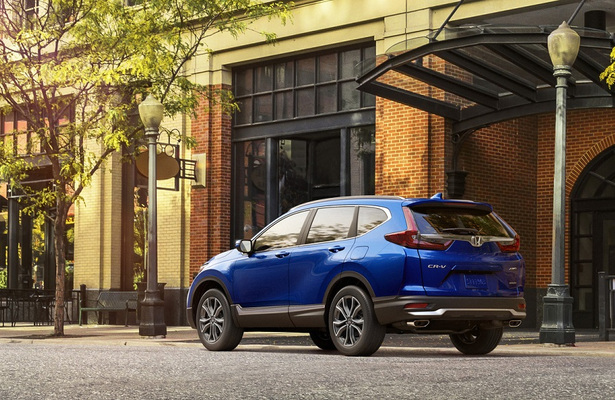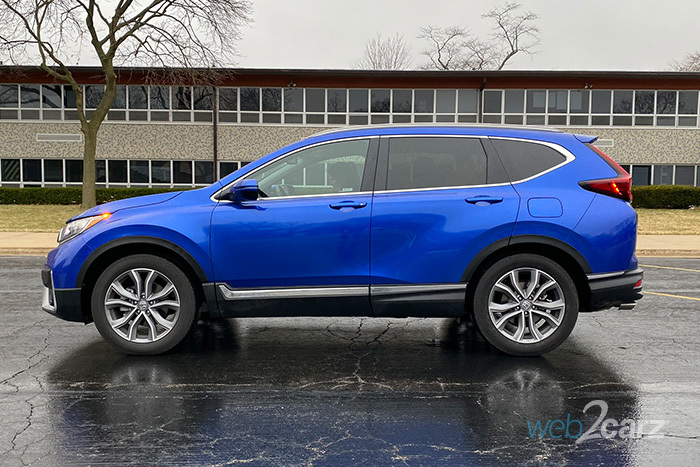

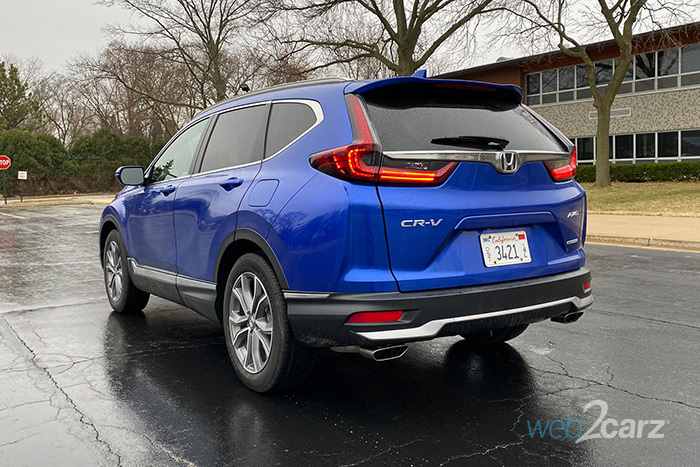
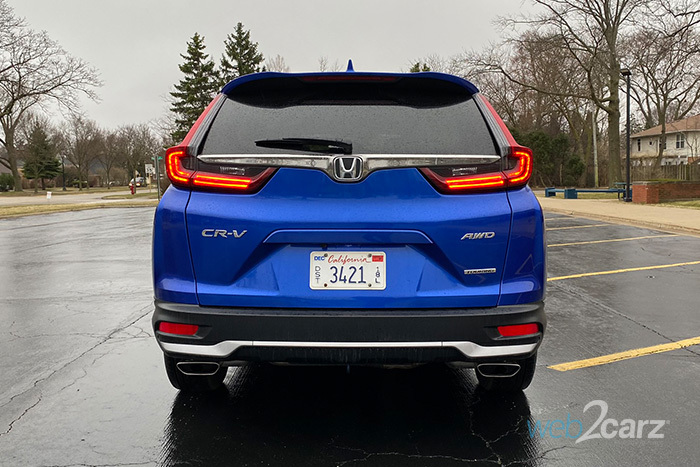
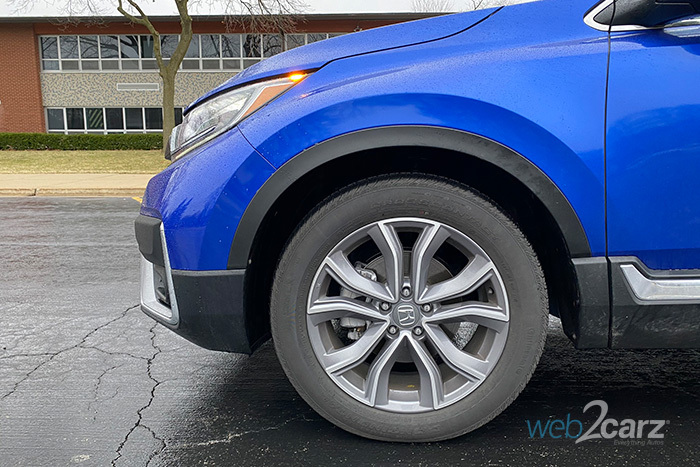
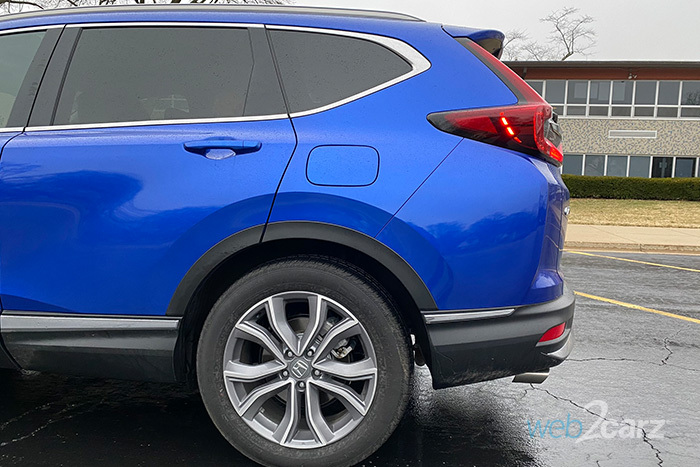
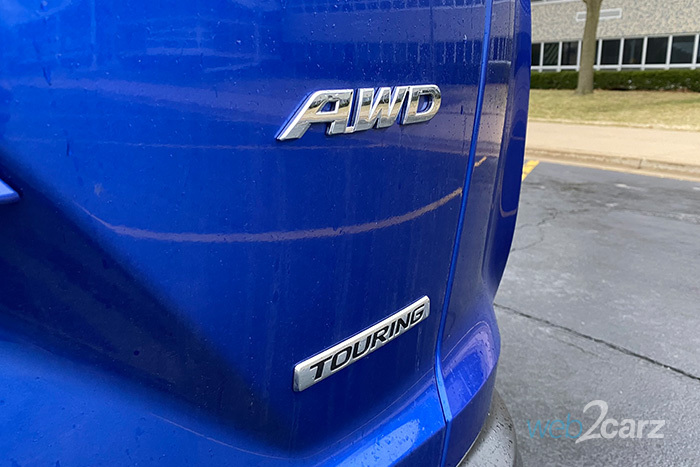
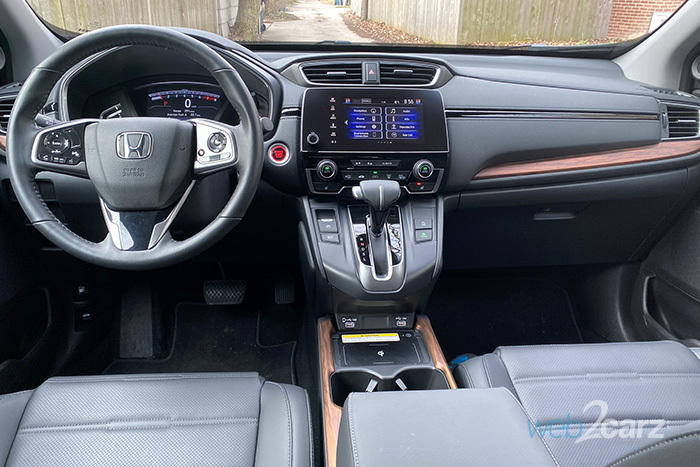
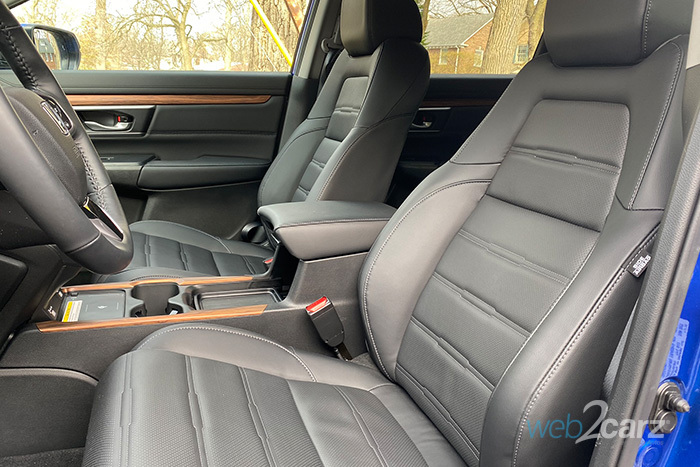
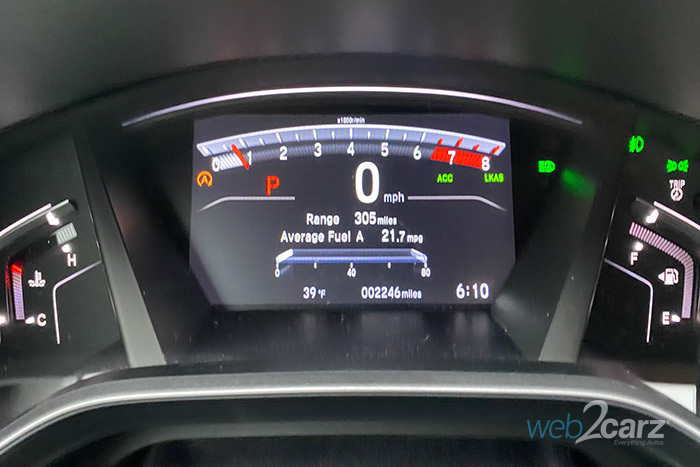
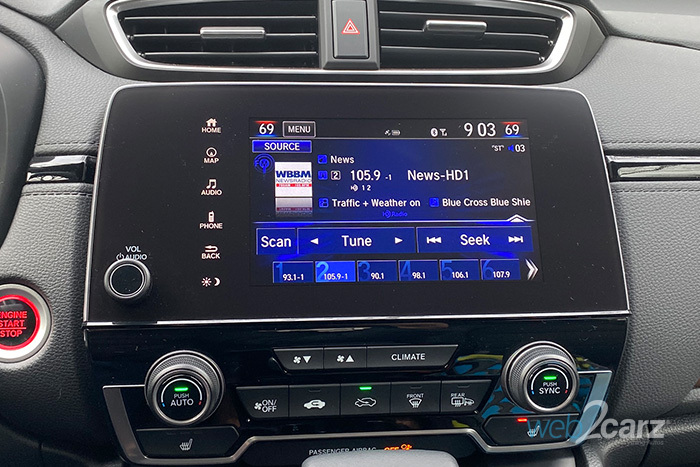
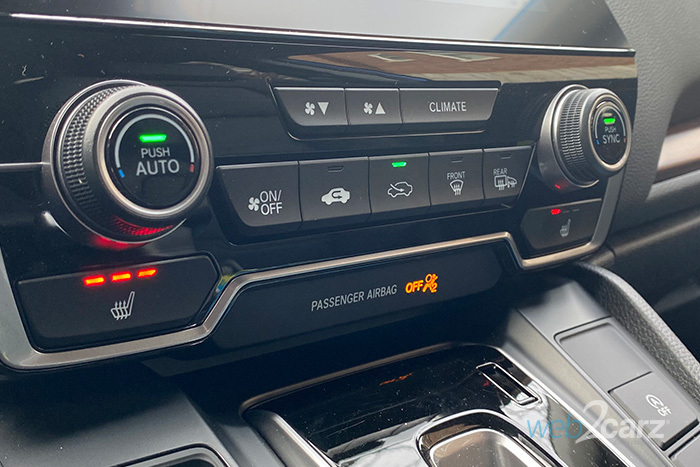
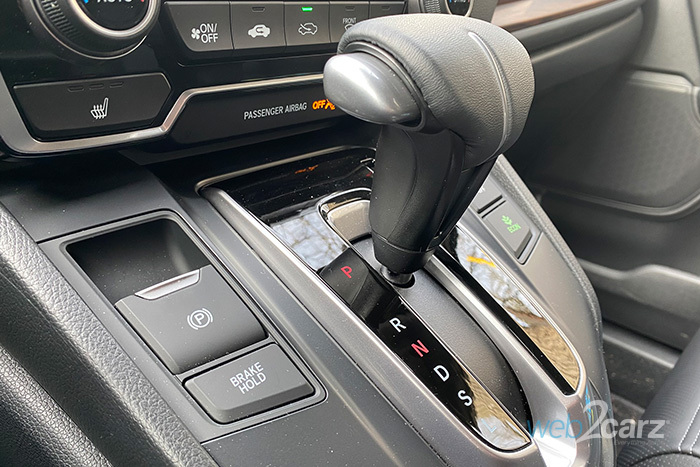
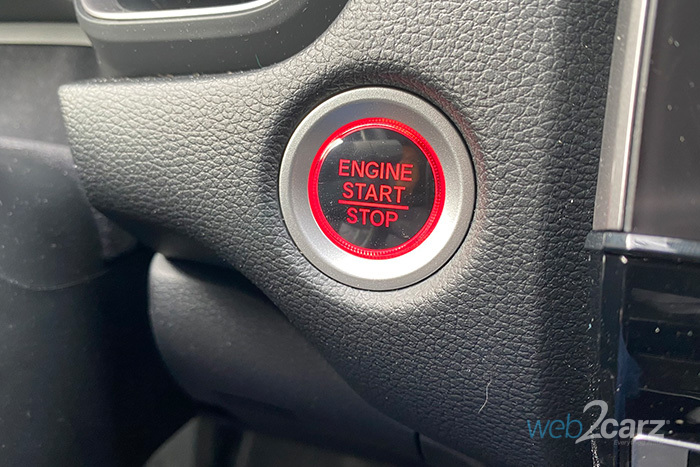
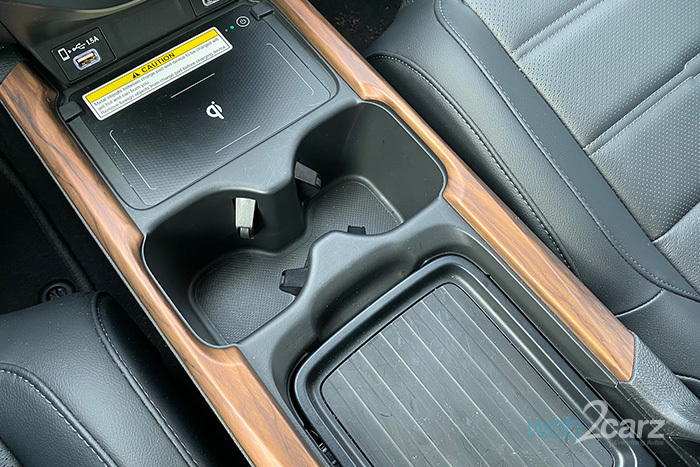
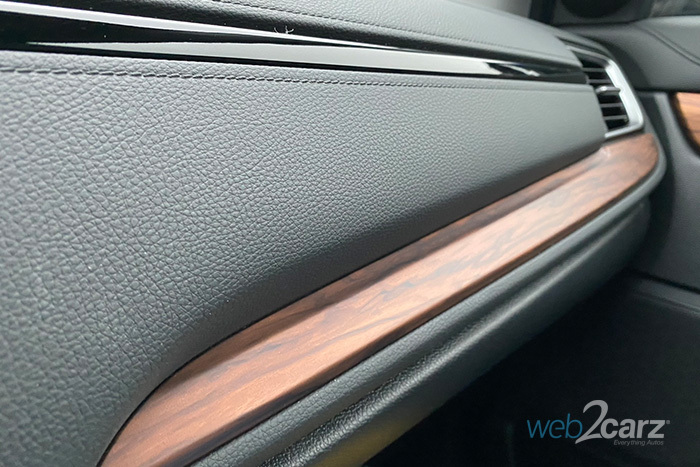
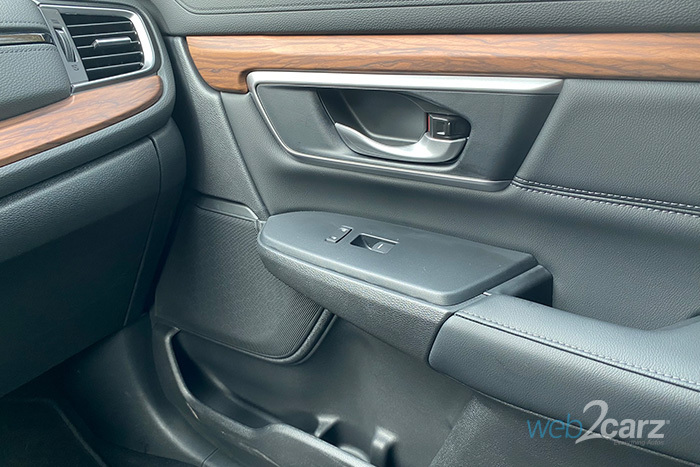
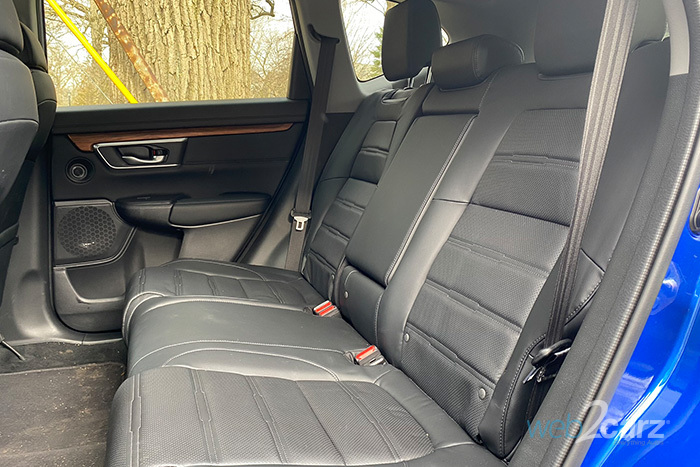
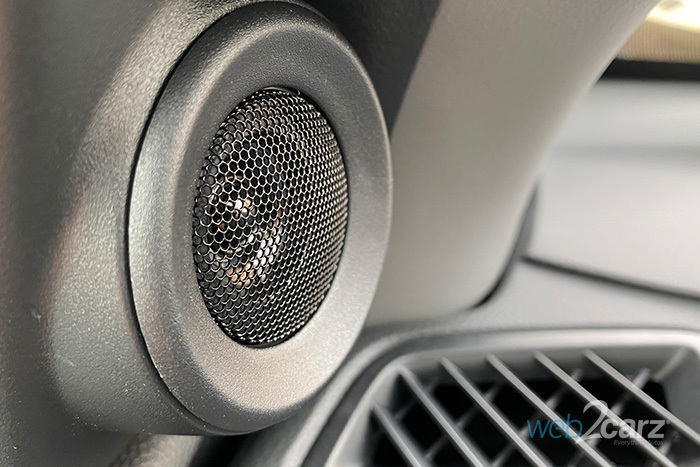
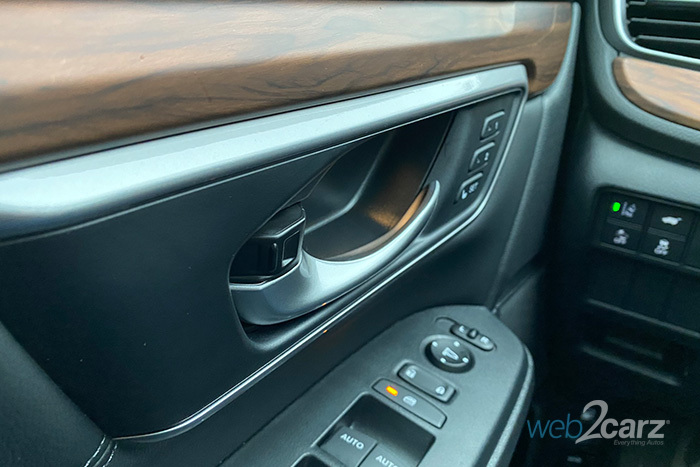
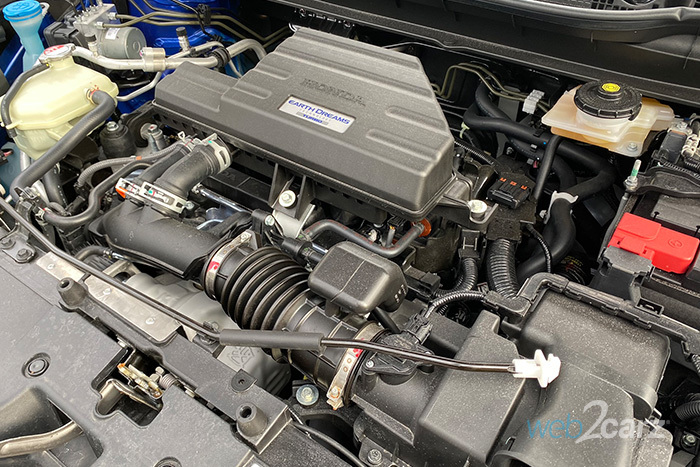





















Amos Kwon, Editor-In-Chief
 | Positives: Relaxed driving experience, supremely roomy, excellent fuel economy. |
 | Negatives: Infotainment system is difficult to use and unattractive, some hard plastic surfaces, not as fun to drive as a Honda should be. |
 | Bottom Line: The CR-V is the second best-selling crossover (next to the Toyota RAV4) for a reason. It's roomy, comfortable, and easy to drive. The fuel efficiency and practicality are reason alone to buy it, despite its lackluster acceleration. |
Driving Experience
7.2
The Honda CR-V is a pleasant vehicle to drive. It's not especially quick, but it has more scoot than we expected from the small-displacement 4-cylinder turbo engine. While it's not as spritely as the competition, namely the Mazda CX-5 or the Kia Sportage, it is livelier than the Toyota RAV4. Its overall driving manners should please most folks.
Ride Quality: The CR-V is compliant without being spongy. It manages bumps and imperfect road surfaces with ease.
Acceleration: It feels peppy, but 0-60 comes in a little over nine seconds, which isn't blistering. It feels quicker than it actually is. The CVT is actually one of the better versions we've used, and it seems to make the most of the 190 horses while keeping fuel efficiency high.
Braking: The brakes have great feel and modulation. Stopping distances are good, and the Touring benefits from a bigger brake booster and larger tires. Stopping distance from 60 to 0 is 121 feet, compared to the lower trim's 126.
Steering: The CR-V's steering could use more effort since it is on the light side, but at least it's precise. Turn-in is quick, as well.
Handling: body control is good, and the CR-V manages turns very well. There's no significant oversteer.
Technology
6
Honda's in-car tech needs some work, and that's obvious across their lineup. The infotainment system feels a bit outdated, as does the CR-V's driver information screen and gauges, which look like they were done in the early 2000s.
Infotainment System: The Display Audio's 7-inch touchscreen is on the small side, and that big black frame surrounding it doesn't help matters. The font is primitive, and the overly saturated color palette is unattractive and unnecessary. We also were not fans of the responsiveness.
Controls: Although we're happy that CR-Vs have a physical audio knob, we can't understand why volume and track controls on the steering wheel are on totally separate sets of buttons, which is confusing. They're both on the left steering wheel spoke but spaced apart on different clusters. Annoying. At least the shifter is traditional versus pushbutton.
Styling
8.6
The CR-V finally looks good (it hasn't since second-gen), and it actually is on the muscular, premium side (at least from the outside). It looks good from pretty much every angle, and we think Honda did a great job making it look unique without being weird like the RAV4.
Front: The front end is tasteful and reserved while still evoking a sportiness thanks to black mesh, a simple lower fascia framing, and a nicely creased hood.
Rear: Although we don't like protruding taillights that bulge out, the CR-V's are nicely done with a handsome "J" signature and concentric LED elements. Honda also did a great job with reducing the visual height with the chrome bar that spans the rear, the crease below the license plate frame, and the lower fascia lines.
Profile: The muscular side view benefits from thickly-crease fenders, wraparound taillights, short overhangs, and the black body trim.
Cabin: The cabin could use less hard plastic, but at least there are minimal shiny surfaces. It's the look of the electronics that betray an otherwise attractive interior.
Comfort
8.8
The CR-V Touring shines with plenty of space for tall adults, great visibility, and comfortable seats. It feels bigger inside than its exterior would indicate.
Front Seats: Good bolstering and cushioning make for comfy seats for long drives or boring commutes. The leather quality is also quite good.
Rear Seats: Similar to the front seats, there's good contouring in the outboard positions. The middle seat's back cushion/armrest protrudes too much to be comfortable for anything longer than short trips.
NVH (noise/vibration/harshness): The CR-V is well built and quiet. It's only demerit in this area is the shrill of the engine note when its small 1.5-liters are pushed.
Visibility: The CR-V benefits from a good seating position and large windows. The D-pillars are on the thick side, but we had no trouble maneuvering while backing up or changing lanes.
Climate: The heated seats and steering wheel worked quickly, and the climate system was responsive and fired up shortly after startup.
Safety
9
The CR-V is a very safe vehicle with excellent scores and safety tech. While it didn't do as well as the Mazda CX-5, it does tie with the Toyota RAV4.
IIHS Rating: It earned the Top Safety Pick rating with "good" in crash tests and "superior" in accident avoidance tech. It got dinged a little due to headlights and LATCH ease of use.
NHTSA Rating: The CR-V earned five stars in government crash tests.
Standard Tech: Our tester came with a Multi-View Rear Camera, Rear Cross-Traffic Monitor, a Blind Spot Info System, Adaptive Cruise Control, Collision Mitigation Braking System, Lane Keeping Assist System, and Road Departure Mitigation.
Optional Tech: None.
Storage/Cargo
9.2
One of the CR-Vs strengths is its interior volume and storage options. While it's categorized as a small crossover, it feels more midsize, despite its lack of three rows. There are cubbies everywhere, and the cargo section swallows stuff without blinking.
Storage Space: The center console has a huge charging tray (which would benefit from a securing bracket so your phone doesn't slide around), big cupholders, a large open tray, and a capacious armrest. Door pockets are long and tall, as well.
Cargo Room: The CR-V has 39.2 cubes with the seats in place and a voluminous 75.8 cubes with the second row flat. That's bigger than the Jeep Grand Cherokee, Toyota RAV4, and the Hyundai Santa Fe.
Fuel Economy
8.8
We achieved good numbers, and we only drove in short bursts on local roads with a heavy foot. The 1.5-liter turbo helps, as does the CVT.
Observed: 25.6 mpg.
Distance Driven: 83 miles.
Audio
7.2
We don't know what brand the premium audio system is, but the 9-speaker system is decent. It doesn't sound especially top-end, but it was clear and without distortion. It would benefit from a subwoofer in the base department. It's a good thing it come standard on the Touring, so you don't have to pay extra.

 Buying Guides
Buying Guides 